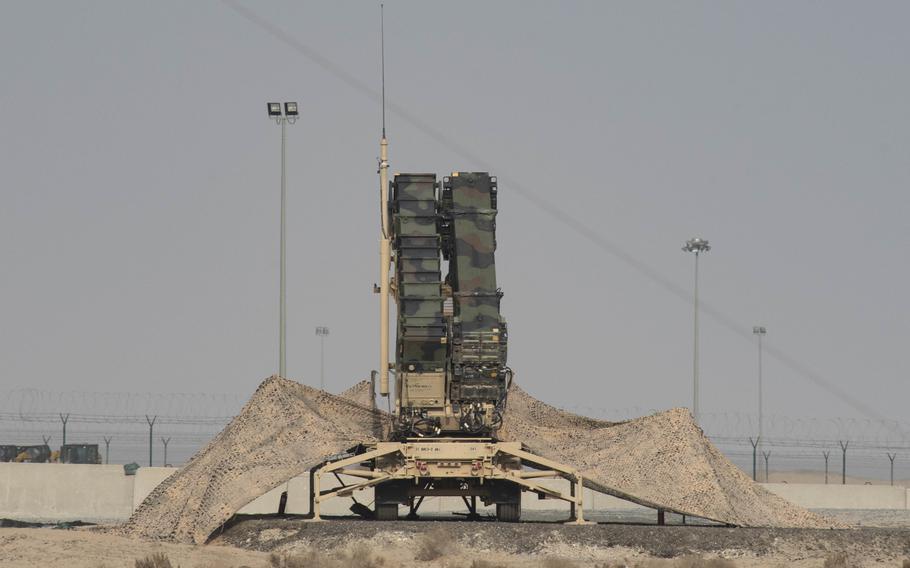
In this 2020 file photo, a Patriot missile launcher stands ready to destroy any incoming threats at Ali Al Salem Air Base, Kuwait. The Army recently transferred a Patriot battalion from Indo-Pacific Command to the Central Command area of operations as the U.S. builds up its defenses in the Middle East. (Kenneth Boyton/U.S. Air Force)
U.S. Patriot missile defense systems were recently moved from Asia to the Middle East amid ongoing fighting with Houthi rebels in Yemen and threats from their backers in Iran, the leader of Indo-Pacific Command told lawmakers this week.
Speaking before the Senate Armed Services Committee on Thursday, Adm. Samuel Paparo said the Army had transferred a Patriot battalion from INDOPACOM to the Central Command area of operations as the military builds up its defenses in the region.
Tensions have been escalating since the U.S. launched a fresh barrage of airstrikes against the Houthis last month, with President Donald Trump vowing to keep up the pressure until the militants halt attacks on commercial shipping in the Red Sea.
Trump also has threatened to go after their backers in Iran if the maritime attacks don’t stop.
Iran’s supreme leader, Ayatollah Ali Khamenei, has in turn threatened to strike American bases if the U.S. attacks Iran, vowing to deliver a “strong blow” if necessary.
The Patriot is considered one of the military’s most advanced air defense systems, designed to detect and shoot down ballistic missiles, cruise missiles, drones and advanced aircraft, according to manufacturer Raytheon.
One battalion typically contains four batteries, each of which includes a truck-mounted launching system with eight launchers, radar, a control station and a generator, according to the Army.
Moving the battalion, Paparo said, required 73 flights on C-17 cargo planes, which can carry loads of up to 170,000 pounds.
He mentioned the Patriot in the context of challenges faced by the Indo-Pacific Command but didn’t share the precise location of the battalion or details about what it was defending.
But its transfer coincides with a recent buildup of force in the CENTCOM area of responsibility.
The U.S. also recently deployed part of its B-2 bomber fleet to the Indian Ocean island of Diego Garcia, according to satellite images reviewed by The Associated Press.
And the aircraft carrier USS Carl Vinson arrived in the region this week to serve alongside another carrier, USS Harry S. Truman, CENTCOM announced.
Meanwhile, the U.S. is also exploring diplomatic options to ease the tension. Special envoy Steve Witkoff is set to meet with a senior Iranian leader in Oman on Saturday to discuss Iran’s nuclear program, which Secretary of State Marco Rubio said he hopes will lead to peace.